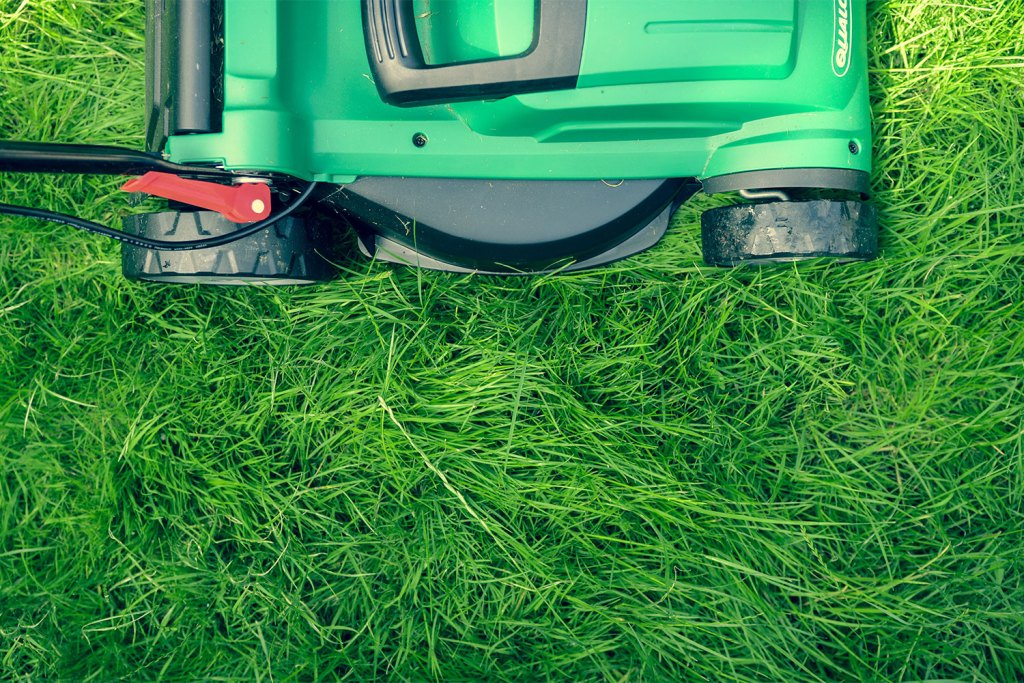Even if you have a busy work schedule, it’s possible to maintain a lush, green lawn. Dedicate one hour a week to lawn care, and you’ll see that your yard is thriving even with minimal effort. In fact, tending to your lawn regularly will save you time because you won’t have to deal with the results of an irregular lawn care routine. Discover our five tips for managing your lawn on a busy schedule.
Install automatic watering systems
Frequency: At least one inch of water once a week.
An automatic watering system, like a built-in sprinkler, saves you time and effort. These devices allow you to set watering times and frequency, ensuring that your lawn gets watered even if you forget to do it. If an underground irrigation system is not an option, consider freestanding sprinklers that rotate or roll across your lawn. You will still need to connect it to an outdoor water source, set it up, and then store it once it’s done watering, but it still saves you time when compared to manual watering with a hose.
Remember to water early in the morning or at night to give your lawn a chance to absorb the water.

Fertilize with slow-release formulas
Frequency: Once in the spring, once in the fall.
A healthy lawn begins with healthy soil. There are three main minerals soils need to thrive: Nitrogen, potassium, and phosphorus, says SFGate. Fertilizer contains either quick-release nitrogen or slow-release nitrogen, and the latter is ideal if you want to apply fertilizer less frequently.
Slow-release nitrogen fertilizer encourages healthy root and leaf development, as it won’t induce rapid growth like a quick-release fertilizer does. However, if you have a thriving, established lawn that has a strong root system, a quick-release fertilizer is a good pick-me-up for a growth spurt and lush green leaves. Note that you’ll need to reapply quick-release fertilizers every few weeks.
If you have a large lawn, consider fertilizing your lawn in segments. Apply fertilizer to a different section every day or every week.
Mow consistently — or at least when absolutely necessary
Frequency: Once or twice a week in the summer, biweekly in the fall.
Manage your overgrown lawn by mowing consistently. When you mow your lawn, trim off only one-third of the blade leaf. For most grasses, your blades should be 2 ½ to 3 inches in height, says Pennington. In the spring and summer, mowing your lawn gets rid of weeds and keeps them in check. In the fall, mowing your lawn slashes stray fall leaves that act as natural fertilizers when they decompose (for more, read our fall and winter lawn-mowing tips).
Choose an electric lawn mower over a manual mower to save you time and energy. An automatic mower helps you work through your lawn quickly, especially if you have a large yard. A mower with a built-in leaf and grass clipping bagger also saves you time from raking and picking up debris.

Apply weed killer strategically
Frequency: Once in the spring and as needed.
Administer an herbicide early in the spring to prevent weeds from taking root. As the season progresses into summer, you might witness new weed growth. If they come up in patches, spot-spray them with a handheld herbicide. If the infestation is large, use a hose sprayer. These products attach to your hose handle and are then diluted with water, helping you spray larger areas in a shorter amount of time.
To prevent weed growth, don’t cut your grass too short, don’t over-water, and fill in empty or bare patches with extra seed, say The DIY Network. When your grass is too short, weeds have space to grow over your grass leaves and thrive. The same is true when there are empty patches in your lawn. After winter, fill in bare patches with seed to prevent weed growth. Overwatering also prevents a strong root system, so watering just once a week should suffice for most lawns.
Aerate your lawn regularly
Frequency: Once a year or every two years, depending on foot traffic.
Aerating your lawn means pulling up plugs of soil from your lawn so your yard can breathe and avoid compact layers of soil, roots, and other debris. This also lets water and fertilizer reach your lawn’s roots.
High-traffic yards and busy times of the year, such as summer, mean your soil may be at a higher risk for becoming compact. Ideally, you should aerate your lawn once a year if it gets a lot of action and once every two or three years if your soil type does not get compacted quickly. Loamy or clay soils compact quickly, while sandy soils are more forgiving.
You can hire professionals to aerate your lawn, or you can rent or buy a lawn aerator machine and tackle the project yourself. There are handheld aerators available, too, but note that these require more time and effort.
Your busy schedule might seem like a barrier to a lush lawn, but you can achieve a robust lawn in a few easy steps. Allot at least an hour of your time weekly to care for your lawn — in the spring, your yard will be green and weed-free. Practicing proper lawn care techniques saves you time and effort in the long run. Follow our five easy lawn care tips today for a healthy yard.
Editors' Recommendations
- 6 kinds of perennials that bloom in the summer for a gorgeous garden all season
- How often should you water new sod? What you need to know
- 5 things you should never bother to fix when selling your house
- How to choose the best fall lawn fertilizer for a lush yard in spring
- How to level a yard (and 3 reasons why you really should)




